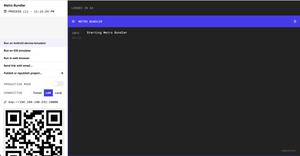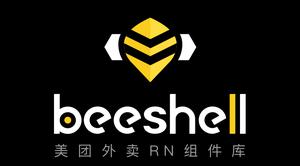React:受控组件与非受控组件混用实战 - 译文

原文链接:React: hybrid controlled components in action
受控组件
非受控组件
混用受控组件和非受控组件
原则一
原则二
原则三
原则四
实施方案
总结
FBI WARNING: 对于提倡无状态设计的React来说这可能是一种反模式。
众所周知,有很多web组件可以通过用户交互改变它的状态,如<input>,<select>,或者我们常用的一些在线富文本编辑器。这些组件在日常开发中不是很起眼 - 我们可以通过在其中键入内容或设置value属性来轻松修改它的值。但是,由于React是单向数据绑定的,在React中使用这些组件不是很好控制它的状态:
1.一个维护自身
State的input组件不能从外部修改它的状态;2.一个
input组件的值如果由外部props传入,则其值受外部控制;
基于上述两个特点,React提出了受控组件和非受控组件的概念。
受控组件
一个受控的
input组件接受一个value属性,渲染一个<input>元素,其值反应value属性的值。受控组件不保存其自身的内部状态; 该组件纯粹根据
props呈现内容。
也就是说,如果我们有一个通过props设置value的input组件,它将持续显示props.value,即使你通过键盘输入字符。换句话说,你的组件是只读的。
很多流行的组件都是以这种方式运行。如果我们将类似value这样的属性从这些组件中移除,你好发现它会变成一个“死亡的组件”, - 谁会爱死一个死人呢?
在使用受控组件时,您必须始终传递一个value属性,同时注册一个onChange处理程序,才能以使它们处于活动状态,如此一来,它的上层组件会变的复杂和混乱。
非受控组件
一个不带
value属性的input组件是非受控组件。用户的任何输入都将立即被反应在渲染元素上。不受控制的组件保持其自身的内部状态。
这样的组件运作起来更像原生的组件。可是等等!我们如何像以前那样通过普通的js操作input.value = xxx来更改输入值呢?
遗憾的是,你没有办法从外部改变其内部的状态,因为它是不受控制。
混用受控组件和非受控组件
那么为什么不构建一个既受控又不受控制的组件呢?根据React对(非)受控组件的定义,我们可以得到一些启示和原则:
原则一
props.value始终具有比内部state.value更高的优先级。
当设置了props.value,我们应该始终使用其值代替state.value渲染组件,所以我们可以定义一个displayValue getter属性:
get displayValue() { return this.props[key] !== undefined ?
this.props[key] : this.state[internalKey];
}
然后在render功能:
render() { return (<div>{this.displayValue}</div>);
}
原则二
组件的任何更改都应同步到内部
state.value,然后通过props.onChange请求更新上层组件的状态。
将值同步到state.value可以确保组件在不受控制时能够呈现最新值。请求外部更新告诉上层组件执行更改props.value,因此受控组件也可以呈现正确的值。
handleChange(newVal) { if (newVal === this.state.value) return;
this.setState({
value: newVal,
}, () => {
this.props.onChange && this.props.onChange(newVal);
});
}
原则三
当组件接收到新的
props时将props.value映射到state.value
同步props.value和state.value的值是非常关键的,它能及时修正内部状态并保证handleChange的正确运转。
componentWillReceiveProps(nextProps) { const controlledValue = nextProps.value;
if (controlledValue !== undefined &&
controlledValue !== this.state.value
) {
this.setState({
value: controlledValue,
});
}
}
原则四
确保优先的值发生变化才更新组件。
这可以防止组件进行不必要的重新渲染,例如,受控组件在内部state.value更改时不应触发重新渲染。
shouldComponentUpdate(nextProps, nextState) { if (nextProps.value !== undefined) {
// controlled, use `props.value`
return nextProps.value !== this.props.value;
}
// uncontrolled, use `state.value`
return nextState.value !== this.state.value;
}
实施方案
综上所有原则,我们可以创建一个装饰器如下:
/** * Optimize hybrid controlled component by add some method into proto
*
* Usage:
* @hybridCtrl
* class App extends React.Component {
* ...
* }
*
* @hybridCtrl('specified_prop_to_assign')
* class App extends React.Component {
* ...
* }
*
* @hybridCtrl('specified_prop_to_assign', '_internal_prop')
* class App extends React.Component {
* ...
* }
*/
import shallowCompare from 'react-addons-shallow-compare';
const noop = () => {};
const optimizer = (Component, key = 'value', internalKey = `_${key}`) => {
// need `this`
function shallowCompareWithExcept(nextProps, nextState) {
const props = {
...nextProps,
[key]: this.props[key], // patched with same value
};
const state = {
...nextState,
[internalKey]: this.state[internalKey],
};
return shallowCompare(this, props, state);
}
const {
shouldComponentUpdate = shallowCompareWithExcept,
componentWillReceiveProps = noop,
} = Component.prototype;
Object.defineProperty(Component.prototype, 'displayValue', {
get: function getDisplayValue() {
// prefer to use `props[key]`
return this.props[key] !== undefined ?
this.props[key] : this.state[internalKey];
},
});
// assign new props to state
Object.defineProperty(Component.prototype, 'componentWillReceiveProps', {
configurable: false,
enumerable: false,
writable: true,
value: function componentWillReceivePropsWrapped(nextProps) {
const controlledValue = nextProps[key];
if (controlledValue !== undefined &&
controlledValue !== this.state[internalKey]
) {
this.setState({
[internalKey]: this.mapPropToState ?
this.mapPropToState(controlledValue) : controlledValue,
});
}
componentWillReceiveProps.call(this, nextProps);
},
});
// patch shouldComponentUpdate
Object.defineProperty(Component.prototype, 'shouldComponentUpdate', {
configurable: false,
enumerable: false,
writable: true,
value: function shouldComponentUpdateWrapped(nextProps, nextState) {
let result = true;
if (nextProps[key] !== undefined) {
// controlled, use `props[key]`
result &= (nextProps[key] !== this.props[key]);
} else {
// uncontrolled, use `state[internalKey]`
result &= (nextState[internalKey] !== this.state[internalKey]);
}
// logic OR rocks
return result ||
shouldComponentUpdate.call(this, nextProps, nextState);
},
});
return Component;
};
export const hybridCtrl = (keyOrComp, internalKey) => {
if (typeof keyOrComp === 'function') {
return optimizer(keyOrComp);
}
return (Component) => optimizer(Component, keyOrComp, internalKey);
};
这个装饰器的使用方法如下:
import PropTypes from 'prop-types'@hybridCtrl
class App extends React.Component {
static propTypes = {
value: PropTypes.any,
}
state = {
_value: '',
}
mapPropToState(controlledValue) {
// your can do some transformations from `props.value` to `state._value`
}
handleChange(newVal) {
// it's your duty to handle change events and dispatch `props.onChange`
}
}
总结
1.我们为什么需要混合受控组件和非受控组件?(什么场合需要使用杂交组件?)
我们需要创建同时受控和非受控制的组件,就像原生组件一样。
2.混合的主要思想是什么?
同时维护props.value和state.value。但props.value的值在渲染时具有更高的优先级,state.value反映了组件的真实值。
以上是 React:受控组件与非受控组件混用实战 - 译文 的全部内容, 来源链接: utcz.com/z/382610.html







